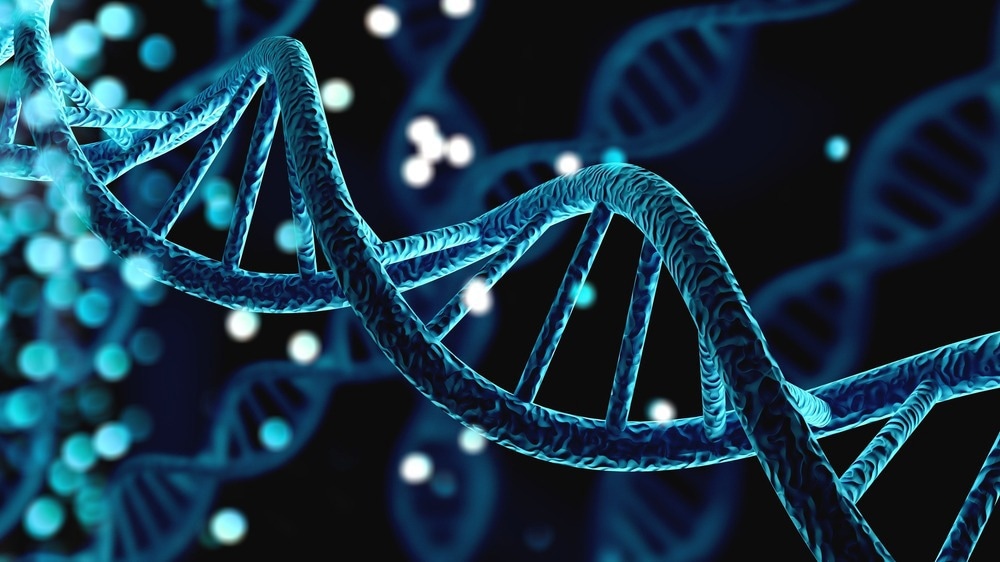Proof-of-concept study holds promise for safer gene therapy techniques for treating immunodeficiencies

In a recent study published in Nature Communications, researchers described an approach to edit the recombination-activating gene 2 (RAG2) locus for therapeutic applications.

Severe combined immunodeficiency (SCID) represents rare monogenic disorders with defects in humoral and cellular immunity. The RAG genes encode proteins that initiate lymphoid-specific V(D)J recombination, critical for T- and B-cell maturation. Therefore, individuals with disease-causing RAG variants completely lack or have significantly fewer B and T cells.
Moreover, RAG gene transcription is regulated by cis-acting sequences surrounding their respective coding sequences (CDSs). RAG genes are exclusively expressed during the G0/G1 stage, with regulated expression during specific phases of B and T cell development. Allogeneic hematopoietic stem cell transplantation (HSCT) is the only definitive treatment for SCID.
Nevertheless, human leucocyte antigen (HLA)-matched donors are rare, and haploidentical HSCT, the alternative therapy, reduces survival rate to 60% to 70%. An ideal alternative would be ex vivo manipulation of the patient’s hematopoietic stem and progenitor cells (HSPCs) and subsequent transfer to the patient as autologous HSCT.
The study and findings
In the present study, researchers described a clustered regularly interspersed short palindromic repeats (CRISPR) and CRISPR-associated nuclease 9 (Cas9)-based genome-editing approach to replace the entire RAG2 CDS with a corrective transgene in cluster of differentiation 34-positive (CD34+) HSPCs.
Two recombinant adeno-associated virus serotype 6 (rAAV6) vectors were synthesized to integrate a green-fluorescent protein (GFP) expression cassette and a bovine growth hormone polyA (BGHpA) sequence into CD34+ HSPCs after delivering a modified RAG2 single guide RNA (sgRNA) or Cas9 ribonucleoprotein complex.
The first donor used 400 bp homology arms flanking the Cas9 cut site for insertion. In contrast, the second donor used a 400 bp left homology arm (LHA) covering the sequence upstream of the cut site and a 400 bp right homology arm (RHA) spanning the sequence downstream of the RAG2 stop codon to replace the whole RAG2 CDS with the donor DNA (henceforth, CDS-replacement [CDSR] vector).
The homology-directed repair (HDR) efficiency of the first donor was higher than that of the second donor. The HDR efficiency of the second donor was significantly increased when the RHA length was increased to 800 bp or 1600 bp. Next, the team produced two additional CDSR vectors; one had BGHpA and woodchuck hepatitis virus post-transcriptional regulatory element (WPRE) sequences, and the other lacked both.
The vector lacking both elements induced lower HDR, while the HDR efficiency of the other was comparable to that of the extended second donor. Further, the team designed a CDSR correction donor with a 400 x 800 bp homology arm pattern for the knock-in (KI) of the diverged codon-optimized RAG2 (dcoRAG2) coding DNA (cDNA). The dcoRAG2 stop codon was replaced with a T2A self-cleaving peptide sequence and truncated nerve growth factor receptor (tNGFR) reporter gene.
Besides, two additional CDSR correction donors with synthetic regulatory elements following the tNGFR sequence were synthesized. One contained the WPRE-BGHpA sequences, and the other had the BGHpA sequence. The correction donors showed effective locus-specific HDR. In-out polymerase chain reaction (PCR) results corroborated the highly effective HDR.
The team performed inverted terminal repeat (ITR) sequencing to detect the integration of rAAV6 donor’s ITRs because AAV donor vectors can randomly integrate into the genome. This revealed limited integration of ITRs, although not at the target site. Next, the team engineered the genotypes in the healthy donor (HD)-derived CD34+ HSPCs.
The team obtained cells with one allele targeted by one of the correction donors and the other with a knock-out (KO) template. A two-step method was developed to enrich cells with about 100% edited alleles. Next, the team tested whether dcoRAG2 expression specifically allowed differentiation into CD3+ T cells with diverse T-cell receptor (TCR) repertoires.
Indeed, endogenous RAG2 expression was eliminated in KI-KO cells, but dcoRAG2 cDNA expression was robust. Moreover, dcoRAG2 transgene expression was still tightly regulated and was not overexpressed, facilitating the development of T cells by the differentiation of engineered cells into CD3+ T cells by day 28.
The CD3+ population also showed robust TCRγδ expression, and CD3+ TCRγδ– cells were presumed to be CD3+ TCRαβ+. Diverse V(D)J recombination repertoires were observed in the RAG2 KI-KO cells following dcoRAG2 cDNA expression on day 28, without any significant differences in TCRγ (TRG) or TCRβ (TRB) clonotypes between mock and KI-KO populations.
Conclusions
The researchers described a strategy that completely replaced the RAG2 CDS to treat autosomal recessive immunity disorders. The CDSR method induced dcoRAG2 cDNA expression without exceeding the endogenous RAG2 expression levels. The CDSR correction donors promoted successful V(D)J recombination and differentiation into CD3+ TCRγδ+ and CD3+ TCRαβ+ T cells that developed into diverse TRG and TRB repertoires.
Overall, this approach can treat mutations while maintaining endogenous spatiotemporal and regulatory elements and is promising for safer gene therapy.
- Allen, D., Knop, O., Itkowitz, B. et al. CRISPR-Cas9 engineering of the RAG2 locus via complete coding sequence replacement for therapeutic applications. Nat Commun 14, 6771 (2023). doi: https://doi.org/10.1038/s41467-023-42036-5 https://www.nature.com/articles/s41467-023-42036-5
Posted in: Drug Discovery & Pharmaceuticals | Molecular & Structural Biology | Life Sciences News
Tags: Allele, Antigen, Autosomal, Cas9, CD3, Cell, Cell Development, Codon, CRISPR, DNA, Ex Vivo, Fluorescent Protein, Gene, Gene Therapy, Genes, Genome, Growth Factor, Growth Hormone, Hepatitis, Hormone, immunity, Immunodeficiency, Locus, Nerve, Nuclease, Palindromic Repeats, Polymerase, Polymerase Chain Reaction, Progenitor Cells, Protein, Receptor, Reporter Gene, RNA, Severe Combined Immunodeficiency, T-Cell, Transcription, Transgene, Virus

Written by
Tarun Sai Lomte
Tarun is a writer based in Hyderabad, India. He has a Master’s degree in Biotechnology from the University of Hyderabad and is enthusiastic about scientific research. He enjoys reading research papers and literature reviews and is passionate about writing.